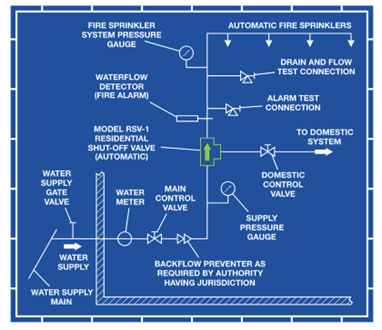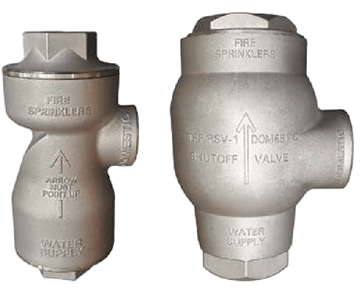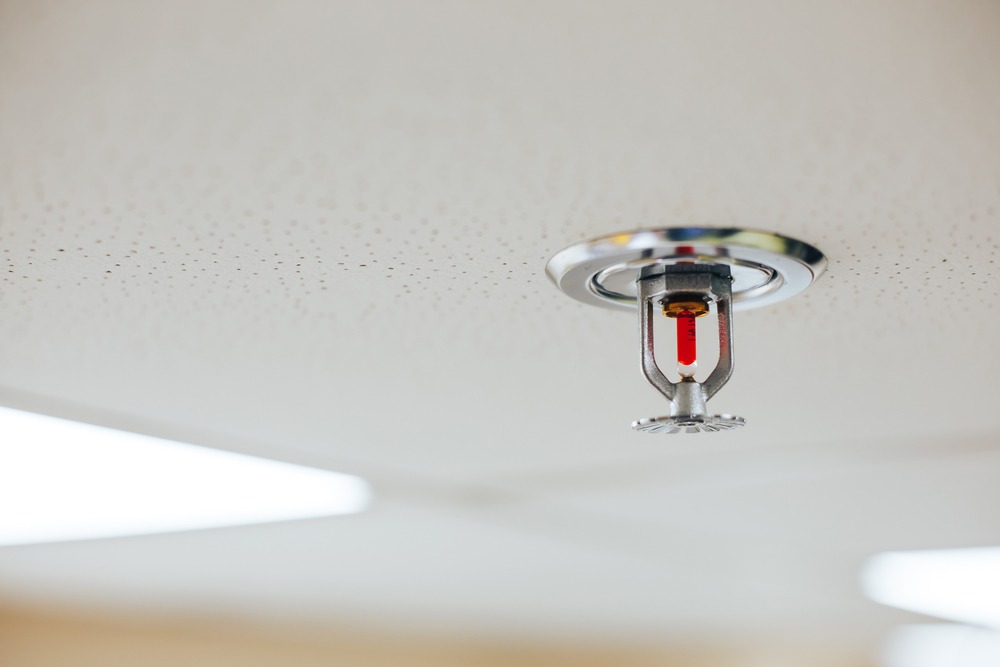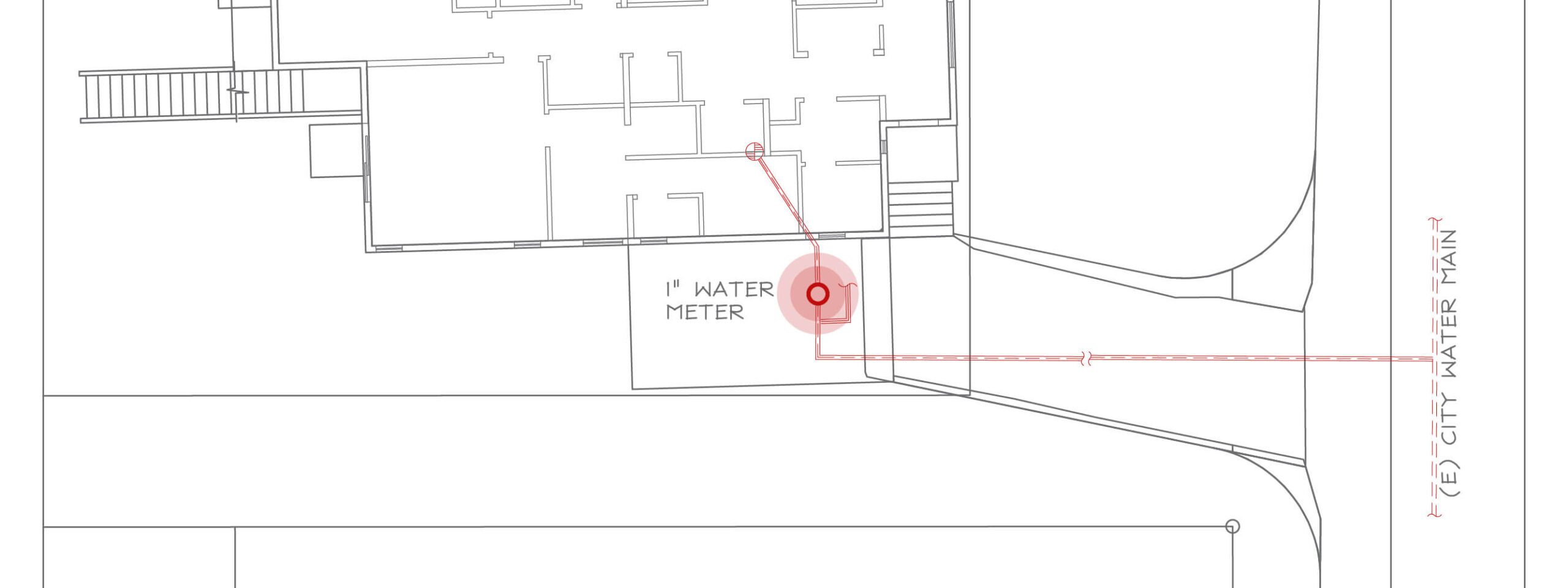What is a Residential Shut-Off Valve and When Should You Use One?
A residential shut-off valve is an optional component of a fire sprinkler system that ensures, in the event of a fire, water is prioritized for fire suppression rather than household use.
The valve is installed at the point where the domestic water supply splits from the fire sprinkler system. In most residential setups, this split occurs at the fire sprinkler riser, though in some cases, it may happen at the underground water line just after the water meter.
When the fire sprinkler system activates, the greater quantity of water flow subsequently entering the sprinkler system causes the shut-off valve to mechanically shift, closing off the water pathway into the domestic system. This ensures that all available water is directed to the fire sprinkler system, maximizing its effectiveness during a fire.

Figure 1: Typical location of the residential shut-off valve at the fire sprinkler riser. Image from the Model RSV-1 Residential Shut-off Valve flyer. Image courtesy of Tyco.

Figure 2: Internal cross section view of the shut-off valve depicting the “Standby” condition (left) with no flow to the fire sprinklers and the “Operated” condition (right) with no flow to the domestic system. Image from the Model RSV-1 Residential Shut-off Valve flyer. Image courtesy of Tyco.
When Should a Residential Shut-Off Valve Be Considered?
A residential shut-off valve may be necessary in situations where water supply is limited. The hydraulic calculations for a given scenario will ultimately indicate if the source pressure or flow are insufficient and a residential shutoff valve is warranted. Such specific scenarios include:
- Residences with constrained water flows: Fire sprinkler systems are designed in many jurisdictions (such as all of California) under the assumption that 5 gallons per minute (gpm) will be used for domestic purposes during fire sprinkler operations. If 5 gpm in addition to the fire sprinkler water flow is not possible from the water supply, a residential shut-off valve can be used to eliminate the need to account for an extra 5 gpm in the domestic system.
- Jurisdictional requirements: Some local jurisdictions mandate the use of a residential shut-off valve, particularly when small-diameter water meters (5/8” or 3/4”) are used to supply a fire sprinkler system.
- Cost-Effective alternative: A residential shut-off valve can be a more economical option compared to installing a pump or using small K-factor, low-flow sprinklers throughout the house. Situations where a shut-off valve may be a cost-effective choice include:
- When the water pressure to the house is low.
- When the water service lateral and underground piping to the residence are long and/or have a small diameter.
- When the water meter supplying the residence is small in diameter (5/8” or 3/4”).
Where to Buy a Residential Shut-Off Valve?
As of the time of this article, the Tyco RSV-1 is the only residential shut-off valve listed for use in residential fire sprinkler systems. This valve is available in two sizes: 1 inch and 2 inches.

Figure 3: Depictions of the Tyco RSV-1 shut-off valves in 1” and 2” sizes. Image from the Model RSV-1 Residential Shut-off Valve flyer. Image courtesy of Tyco.
Design Considerations for the Residential Shut-Off Valve
While beneficial in certain scenarios, a residential shut-off valve is not perfectly efficient. It can cause a small amount of pressure loss and, in some cases, minor flow reduction. When incorporating a shut-off valve, fire sprinkler system designers should consult the technical datasheet to account for the valve’s impact on sprinkler hydraulic calculations.
By understanding the benefits and design considerations of residential shut-off valves, homeowners and architects can make informed decisions about whether this component is a necessary or cost-effective addition to their fire sprinkler system.



